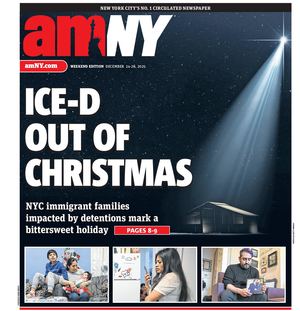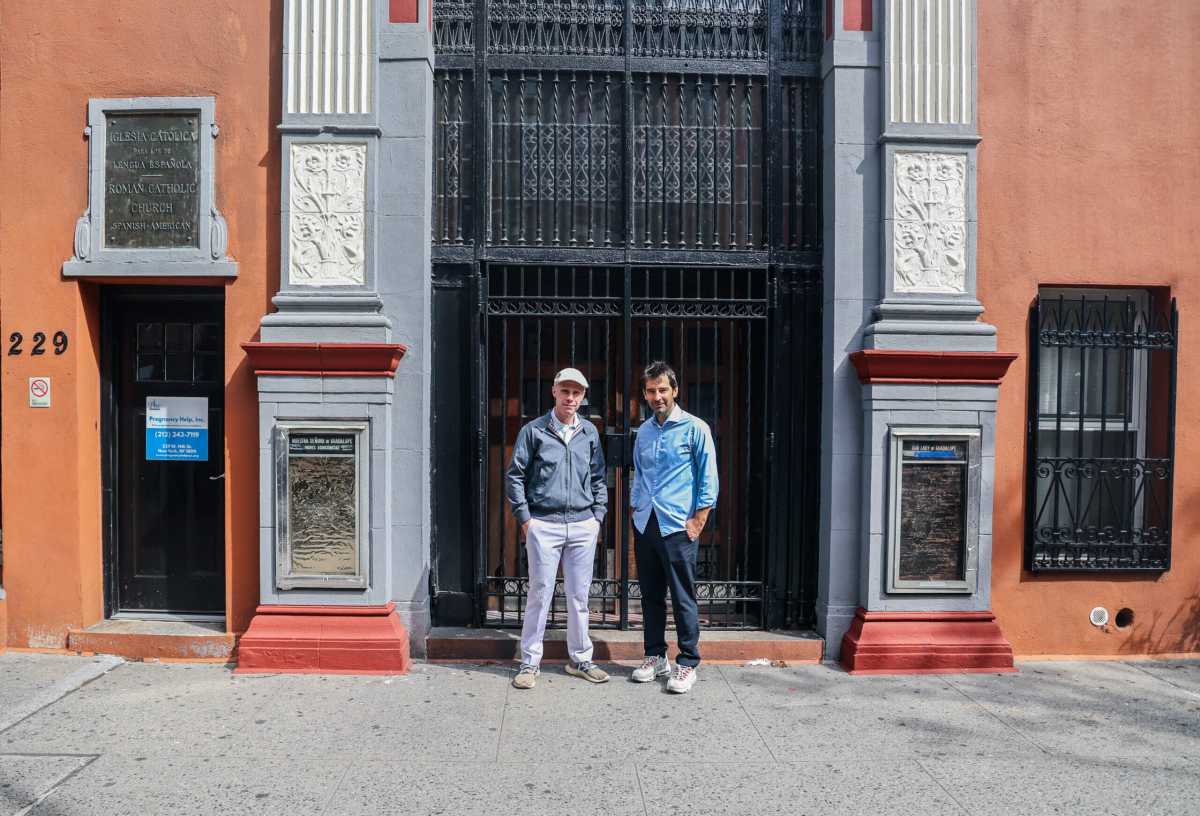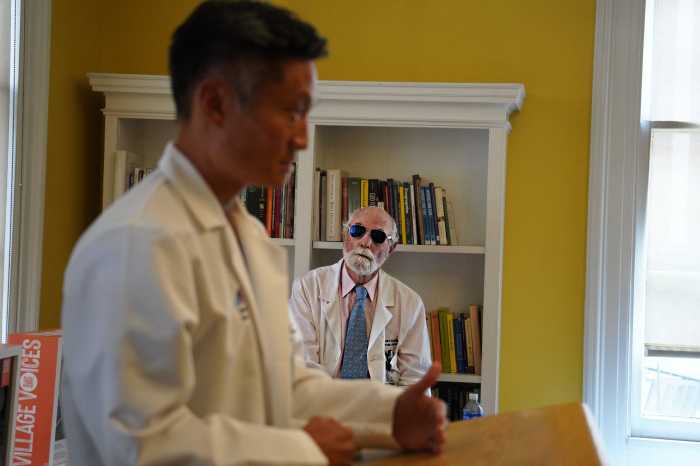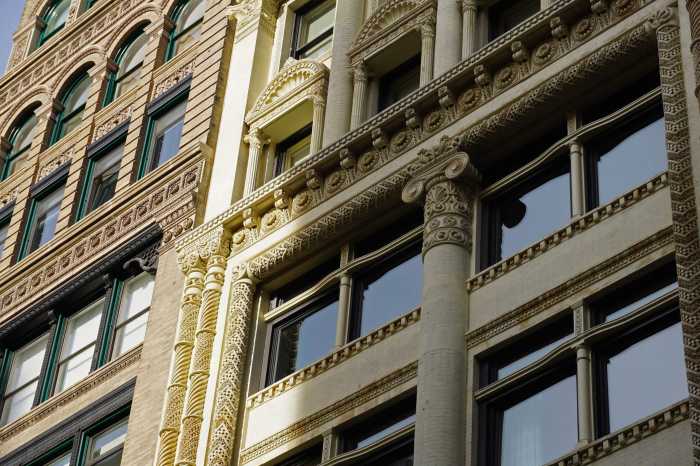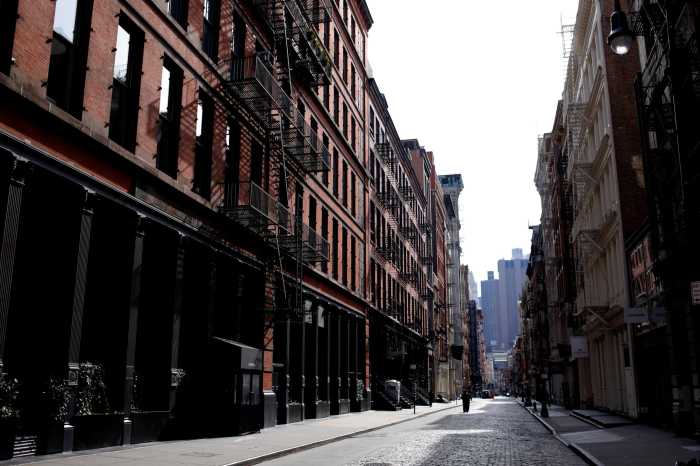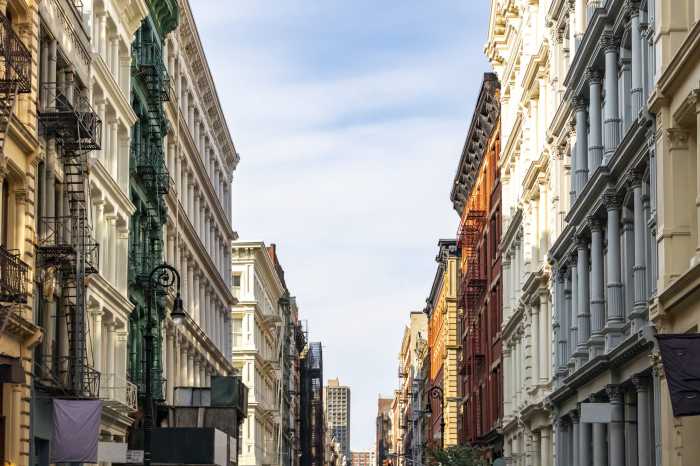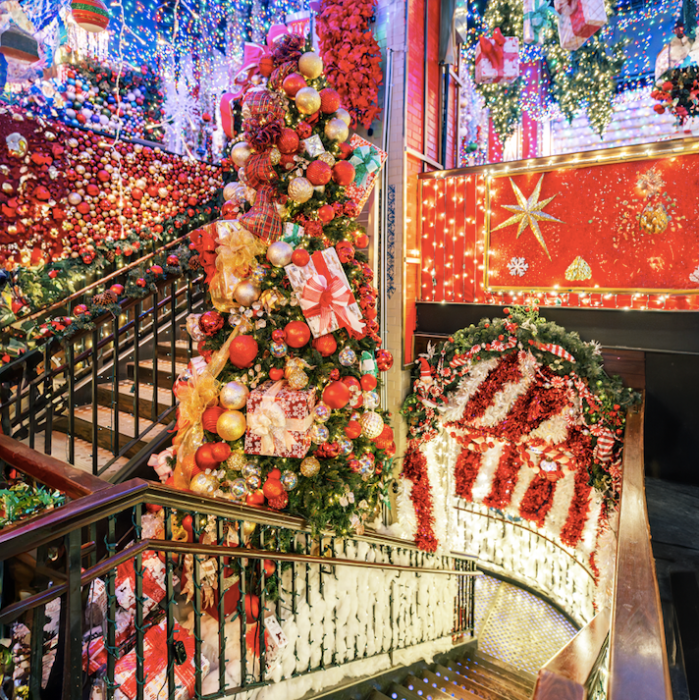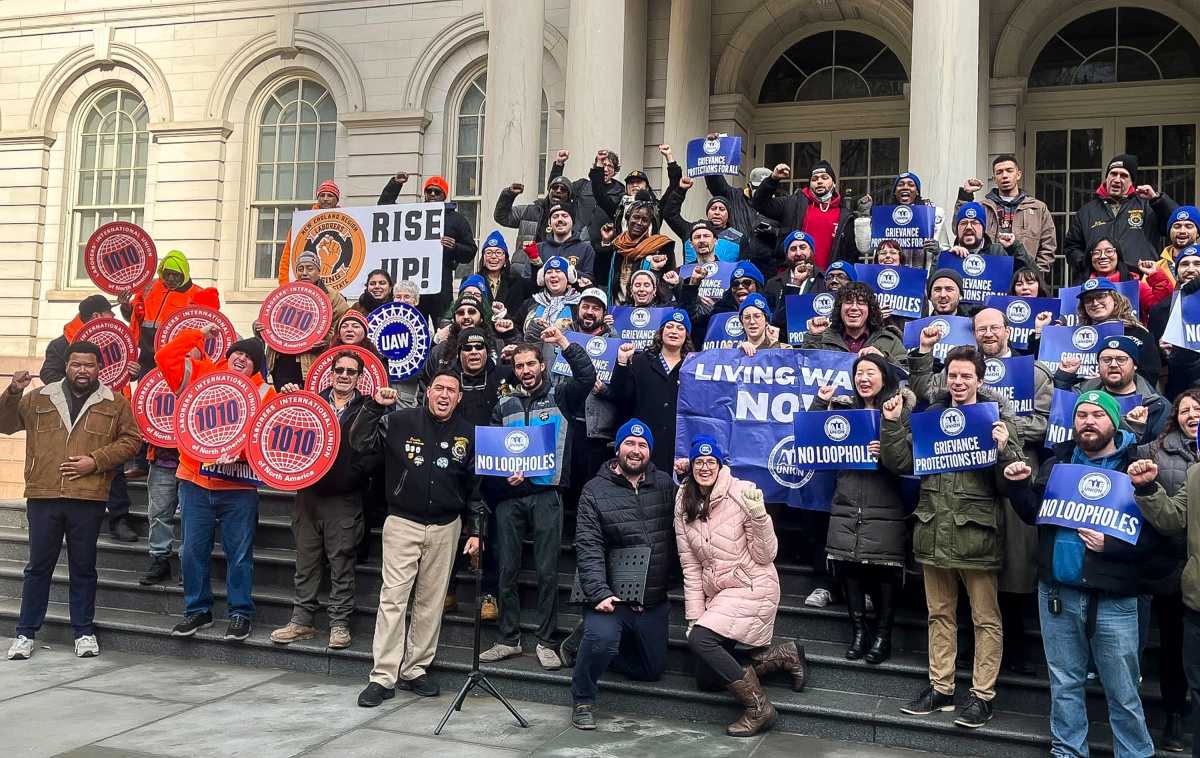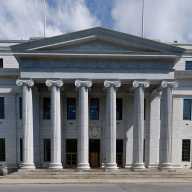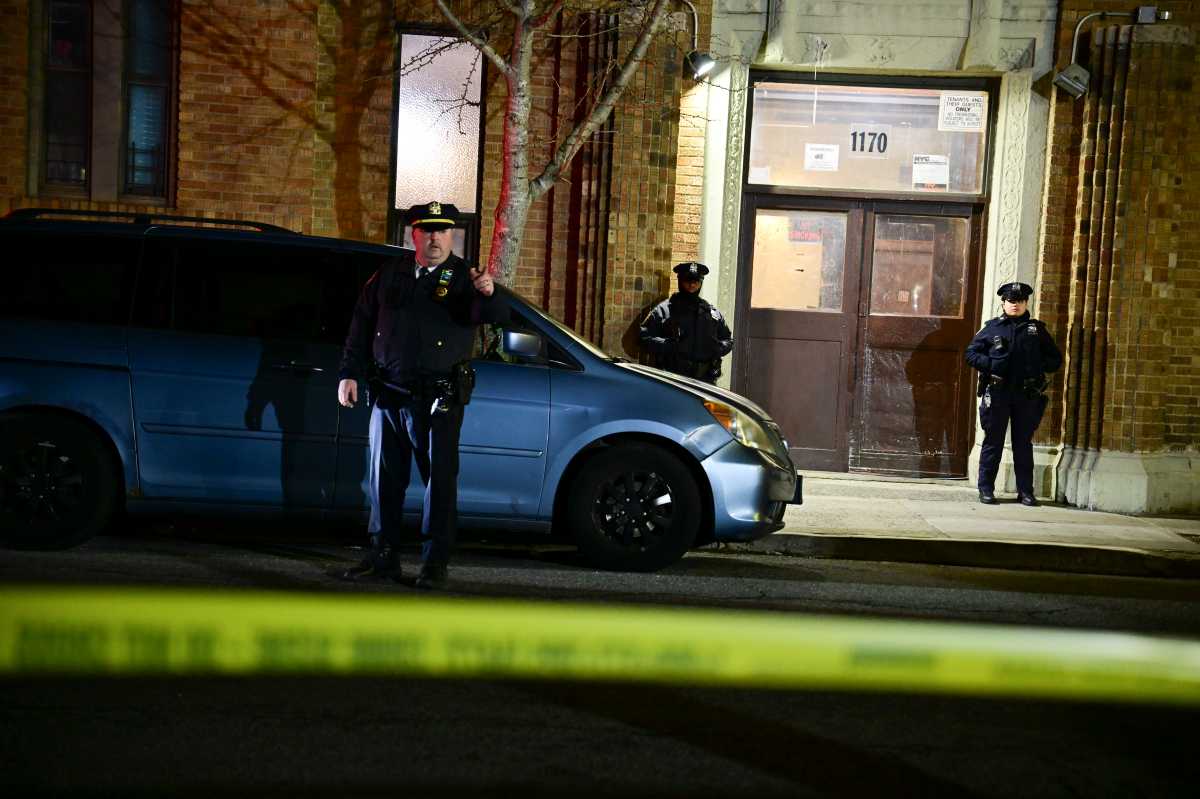A group of preservationists is urging the city to landmark two Manhattan buildings that were once the site of the city’s first church that served a Spanish-speaking congregation to protect them from being demolished.
The buildings, which were formerly occupied by Our Lady of Guadalupe church, are located at 229-231 West 14th St., and consist of two houses with a Spanish Baroque-style facade dating back to 1921. The houses are located in a section of Chelsea that at one time was known as Little Spain.
The church, founded in 1902, was a cornerstone of the Gallego Spanish immigrant community around West 14th Street, and has since served a Latin American community of Mexicans, Cubans, and Puerto Ricans.
Nonprofit Village Preservation, which for decades has advocated for the preservation of architecture and culture in lower Manhattan, is leading the campaign for the landmark designation.
Andrew Berman, executive director of Village Preservation, told amNewYork Metro that several parishioners had reached out to Village Preservation for support in preserving the site.
“It was parishioners of the church who reached out to us to make us aware of this and who asked us to wage this campaign,” Berman said. “They were concerned about its fate and its future and reached out to us to say it would be devastating to see the building destroyed.”
The current parish of Our Lady of Guadalupe had consolidated with the St. Bernard’s parish in 2002 after a century at 229 West 14th Street. The new Church of Our Lady of Guadalupe at St. Bernard is still meeting at the St. Bernard’s Church building several blocks away at 328 West 14th Street.
The church currently serves an estimated 45,000 Spanish-speaking Catholics of the Archdiocese of New York, and was founded as the city’s national parish, which is a type of Catholic parish distinguished by liturgical rites or nationality of the congregation.
The Village Preservation argues that there is a shortage of landmarks in the city that represent Hispanic and Latino history. It says that only a handful of the city’s 40,000 landmarked buildings reflect their history, which needs to change now that the Hispanic and Latino communities make up 30% of New York City’s population.
“My hope is if the building is landmarked, the Archdiocese might reconsider their decision and continue to use the building as a place of worship,” Berman said. “Everything about the architecture and the design speaks to this Hispanic heritage and connection.”
The campaign was launched at the beginning of the year, shortly after the Archdiocese of New York announced that it was likely to sell the property. It has since generated more than 1,500 letters of support that have been addressed to New York City Mayor Eric Adams and the city’s Landmarks Preservation Commission, which is in charge of granting and regulating landmark and historic designations across New York City.
Letters were written by elected officials, preservation organizations, neighborhood groups, and Hispanic and Latino history and heritage experts, including: Guillaume Kientz, the CEO of the Hispanic Society Museum & Liberty; Robert Sanfiz, executive director of La Nacional; Anthony M. Stevens-Arroyo, professor emeritus of Puerto Rican & Latino Studies at Brooklyn College; Orlando José Hernández, professor emeritus at Hostos Community College; Jeffrey LeFrancois, chair of Manhattan Community Board 4; and Chelsea Land Use committee co-chairs Jessica Chait and Kerry Keenan.
As executive director of the oldest Spanish social and cultural institution in the nation, Sanfiz told amNewYork Metro that he penned a letter because he worries about the building being completely torn down.
“When you take away something like that that really ties us all to the community, it’s going to be a big loss,” Sanfiz said.
Sanfiz grew up frequenting West 14th Street as a youth and is still tied to the church site through his work with La Nacional, which organized community events with the church in the past, and as a long-time resident of the West Village, which abuts the other side of West 14th Street.
“Even as a kid, I always knew that it was the heart of the religious community for Spanish speakers,” Sanfiz said. “It’s always been the heart and soul of the block. Even if just the building was kept, but a nonprofit or some other organization took over, we’d be happy.”
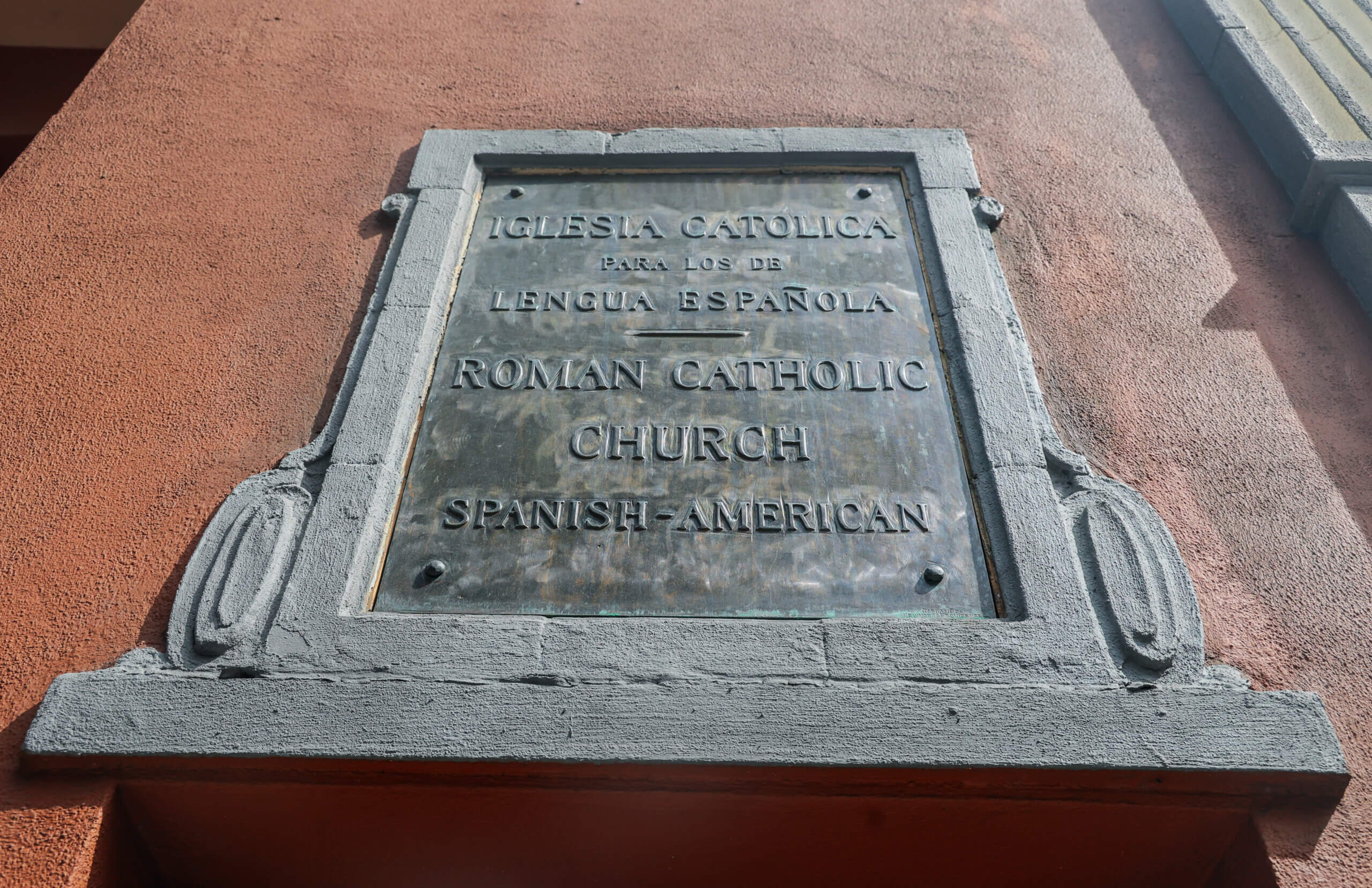
Earlier this year in January, the Archdiocese of New York issued a letter of relegation for the Our Lady of Guadalupe church.
“It means that the Archdiocese plans to dispose of the property, which is unfortunate,” Berman said. “Obviously once they do, it goes on the open market, and that means it’s not likely long, for this world.”
Timothy Michael Cardinal Dolan, the archbishop of New York, stated in the letter that the church would be immediately relegated because “of the immense financial burden on the parish, the required financial resources needed to maintain eight buildings, and the (financial) challenges, challenges that were further increased by the COVID-19 pandemic.”
The letter also states that the relegation means “negotiations that may lead to the sale of the property can start.”
Citing financial instability caused by “shifting demographics and lower enrollments made worse by the pandemic,” the Archdiocese of New York had also announced in February the closure of a dozen Catholic schools across Manhattan, the Bronx, and Staten Island in June.
amNewYork Metro has reached out to the Archdiocese of New York for comment about the campaign to landmark the former site of Our Lady of Guadalupe.
The Landmarks Preservation Commission sent a letter to Village Preservation in August stating that the church site is now “more altered and less architecturally significant.”
“It does not appear to possess a strong enough association with a specific community to merit consideration for its cultural significance alone,” stated Kate Lemos McHale, the director of research for the commission, in the letter.
Courtney Metakis, spokesperson of the Landmarks Preservation Commission, told amNewYork Metro that the Landmarks Preservation Commission conducted extensive research into Our Lady of Guadalupe’s history and architecture and found that the building “was ultimately found not to rise to the level of significance necessary for designation as a city landmark.”
“LPC recognizes the critical role that religious institutions and their buildings play in their communities, as well as the importance of ensuring that Latino/a community history and culture is represented in designations,” Metakis stated. “LPC has recently designated several sites with significance in the Latino/a community and will continue to study sites across all five boroughs to ensure designations reflect the rich diversity of New York City.”
The two sites Metakis referred to are the Bronx Opera House and Holyrood Episcopal Church – Iglesia Santa Cruz in Washington Heights.
Berman and New York Senator Brad Hoylman-Sigal (D-47) co-penned a follow-up response to the commission in early September. Berman said he doesn’t understand why the Landmarks Preservation Commission refuses to designate the former church site as a landmark. He said he found the commission’s response “shocking coming from an agency that’s meant to celebrate and protect our city’s history.”
“We were really disappointed and kind of disturbed by the Landmarks Preservation Commission’s response because it was so dismissive of the significance of this history,” he said. “There is clearly some sort of resistance here.”
“There’s really not a lot of examples of that type of architecture in New York City,” Sanfiz said. “When you take Guadalupe down, that’s the nail in the coffin.”
